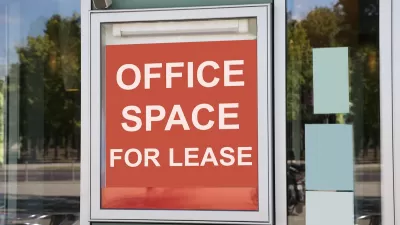A building’s potential for adaptive reuse is based on a variety of characteristics.

In an article for Columbus Business First, Bonnie Meibers describes some key factors that construction industry experts say make an office building a good candidate for adaptive reuse.
These include:
- Form: A building’s shape and ceiling heights dictate how adaptable it is for new uses.
- Floor plates: The size and shape of floor plates influences future uses.
- Envelope: The design of exterior walls impacts how well a building can meet energy and building code requirements.
- Services: Existing services like elevators and HVAC can be repurposed for future occupants.
- Context: The surrounding neighborhood, access to transit, and other nearby amenities will affect how well new tenants can integrate into the neighborhood.
- Code: Zoning codes sometimes prohibit a use change.
Officials in Columbus, Ohio are looking to the example of Calgary, Alberta, Canada, where the city launched an incentive program in 2021 to encourage developers to convert vacant buildings to new uses. “Programs including the Ohio Transformational Mixed-Use Development Tax Credit, the Ohio Historic Tax Credits and the city of Columbus' downtown residential tax abatement have closed the financial gap for many Central Ohio projects.”
FULL STORY: Experts say Central Ohio office buildings with these characteristics could be good candidates for conversion

Alabama: Trump Terminates Settlements for Black Communities Harmed By Raw Sewage
Trump deemed the landmark civil rights agreement “illegal DEI and environmental justice policy.”

Study: Maui’s Plan to Convert Vacation Rentals to Long-Term Housing Could Cause Nearly $1 Billion Economic Loss
The plan would reduce visitor accommodation by 25% resulting in 1,900 jobs lost.

Planetizen Federal Action Tracker
A weekly monitor of how Trump’s orders and actions are impacting planners and planning in America.

Wind Energy on the Rise Despite Federal Policy Reversal
The Trump administration is revoking federal support for renewable energy, but demand for new projects continues unabated.

Passengers Flock to Caltrain After Electrification
The new electric trains are running faster and more reliably, leading to strong ridership growth on the Bay Area rail system.

Texas Churches Rally Behind ‘Yes in God’s Back Yard’ Legislation
Religious leaders want the state to reduce zoning regulations to streamline leasing church-owned land to housing developers.
Urban Design for Planners 1: Software Tools
This six-course series explores essential urban design concepts using open source software and equips planners with the tools they need to participate fully in the urban design process.
Planning for Universal Design
Learn the tools for implementing Universal Design in planning regulations.
Caltrans
Smith Gee Studio
Institute for Housing and Urban Development Studies (IHS)
City of Grandview
Harvard GSD Executive Education
Toledo-Lucas County Plan Commissions
Salt Lake City
NYU Wagner Graduate School of Public Service





























